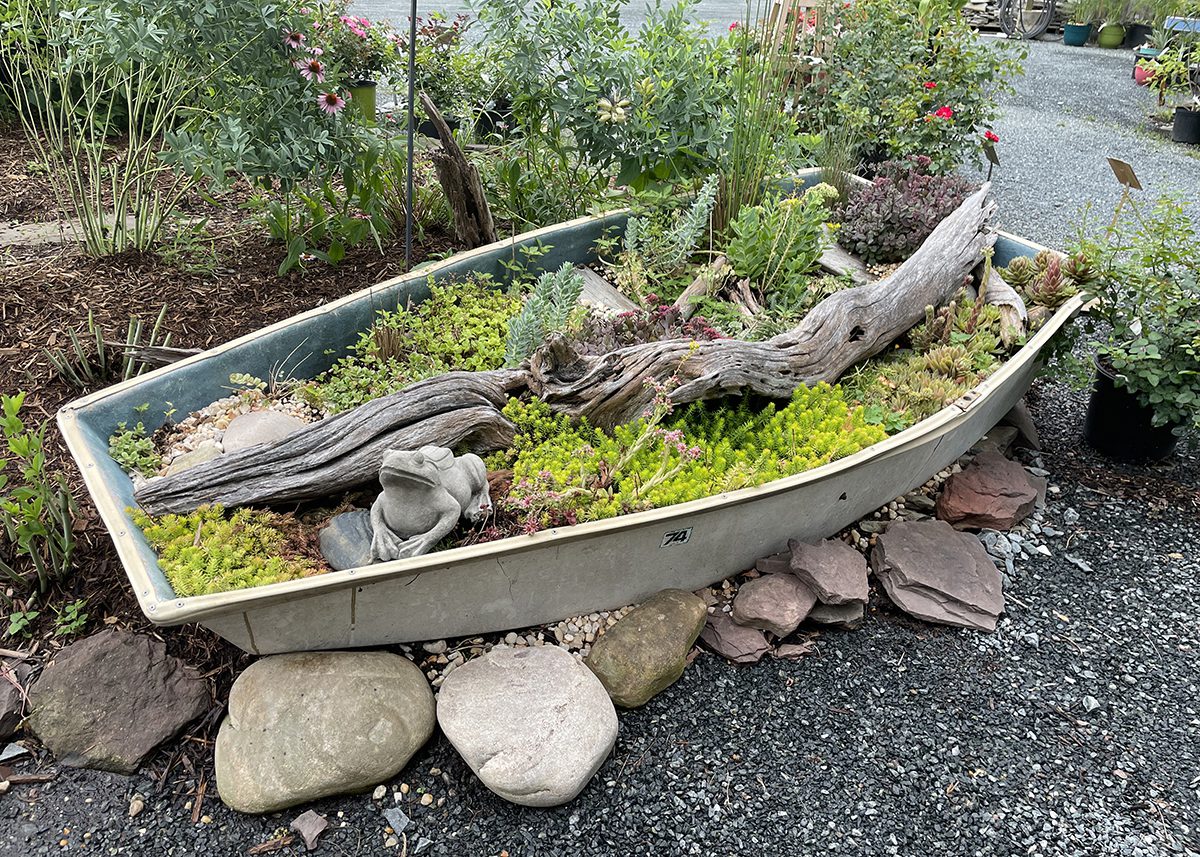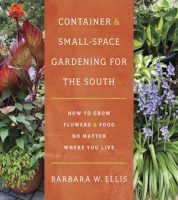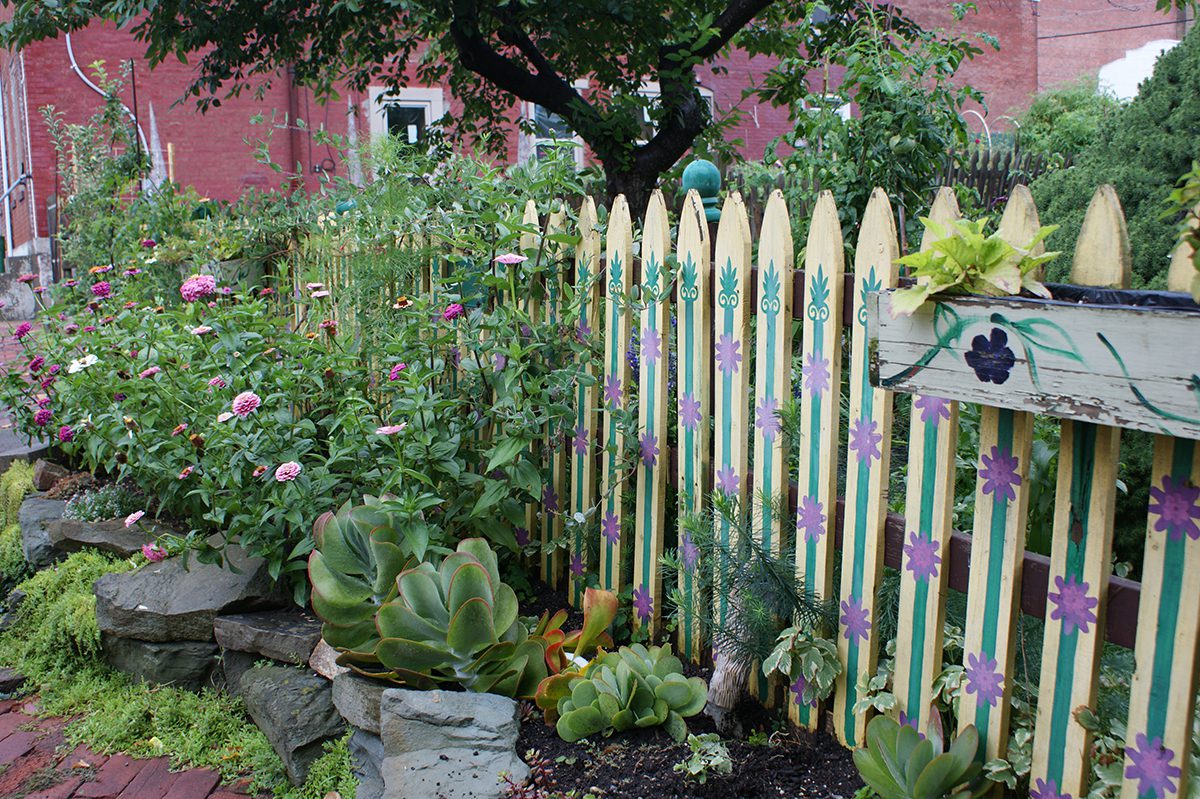
Whether you’re a beginning gardener or one who’s been growing beautiful flowers and vegetables for years, one thing is clear: The fastest and easiest way to start a garden is by keeping it small.
“Even on a limited budget it is possible to get a garden going quickly,” Barbara W. Ellis writes in her new book “Container & Small-Space Gardening for the South: How to Grow Flowers & Food No Matter Where You Live.”
Supporter Spotlight
The author of two dozen gardening books, Ellis is an expert grower based on Maryland’s Eastern Shore. Her latest title is an easy read that covers all of the big questions about container and small-plot gardens in the notoriously hot and humid South: which plants to choose, what pots work best, how much to water, how often to feed, and the right spots for small gardens, container or otherwise.

Ellis also shares gardening advice from her years of real-life experience, including how to be an environmentally friendly gardener. She even digs into seed starting, pest management, garden design and end-of-season tasks.
Best of all, Ellis’ practical instructions, alongside gorgeous photos, move smoothly from chapter to chapter, building confidence and excitement to get out there and grow.
Here are some of Ellis’ top container- and small-space gardening tips.
The easiest way to garden
A container garden is the easiest way to garden, “provided you start with big pots,” Ellis says. Large pots hold water, thereby requiring less watering. “I think beginners start off with small pots, 10 or 12 inches, and they can’t keep up with the watering. One of my first containers, years ago, dried out so quickly that if I watered it in the morning it was nearly dead by the time I got home from work.”
Supporter Spotlight
Containers are a smart way to graduate to small-space gardens. “The minute you start planting in the ground, it is more exciting but probably more complicated,” Ellis says. “Large containers make it possible to learn about growing plants, plus how to combine colors and plant forms, plus what kind of care makes them look better and be healthier.”

The dirt on sandy soil
Eastern North Carolina’s dry, acidic, sandy soils present frustrating challenges for growing healthy plants. How can gardeners overcome struggles? “Organic matter, organic matter, organic matter,” Ellis says.
“Sandy soils burn through it more quickly than any other soil type.” Add organic matter every time you dig a hole. Keep soil covered with mulch, even spreading finished compost under mulches like pine needles. Additionally, minimize digging “because that increases the rate at which the organic matter gets used up,” Ellis says.
How water should flow
Whenever you water, “water until water comes out of the bottom of the pot or the top few inches of soil are wet. That encourages roots to go down into the soil and not crowd around the surface, which makes them more susceptible to drought,” Ellis says.
Carefully select locations. “A pot or garden that receives sun in the morning and shade in the afternoon will need watering less often than one that receives shade in the morning and sun in the afternoon.”
Keep an eye on plants to understand their moisture needs. “I have learned to look at the leaves of plants to figure out when they need watering. The shape changes as they begin to wilt, and the color also changes.”
Resisting temptation at the plant store
“Container & Small-Space Gardening for the South” stresses the value of balancing your gardening dreams against location reality, right down to calculating how many plants you need to save time, money and effort.
Useful lists help you select easy plants for sun and shade. Still, how can you control wishful thinking while being color-bombed at the garden store on the perfect spring day?

“I use a hard-and-fast personal gardening rule, ‘Be attractive or die.’ That keeps me from bringing home plants I know won’t do well. If I have killed something three times, that’s it,” Ellis says. “This approach also made me get excited about looking for plants that thrive where I garden.”
Ellis advises visiting local public and private gardens and native plant organizations to learn what plants work best for your area.
What full sun really means down south
Ellis’ book is full of guidance you might not think about, like how to assess sun and shade patterns. Garden stores may label plants as “full sun,” meaning they need six to eight hours of direct sunlight a day, but Ellis notes that they don’t necessarily need that sunlight all at once.
“While most food crops prefer full sun, some — tomatoes, for example — will produce fruit in part shade in southern gardens,” she writes. Always remember that many plants markets might recommend for sunny areas refer to northern gardens, Ellis adds. Those plants will need more shade and often more watering in the south.
Saving money and the environment
Plastic wastes like soil bags and plant containers harm the environment. Ellis composts all potting soil for reuse, being careful not to add diseased plant parts or seed and plant parts from invasive species. “Most years, I also just replace about the top third of the potting medium in a pot.”
She donates surplus soil to fellow gardeners. Ellis uses some of her extra soil to pot plants she divides and then donates to a local garden club’s annual plant sale. She recycles and refurbishes planting containers, too. Even terra cotta pots are repairable, Ellis writes.







